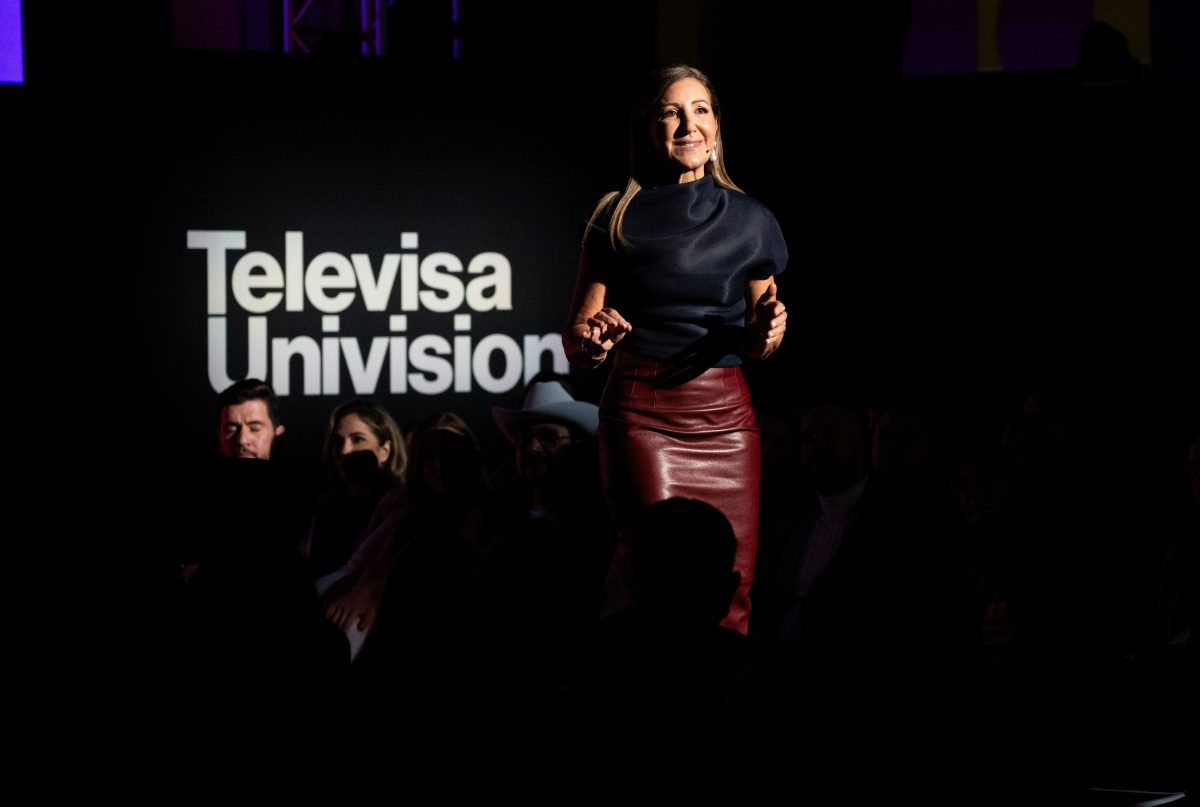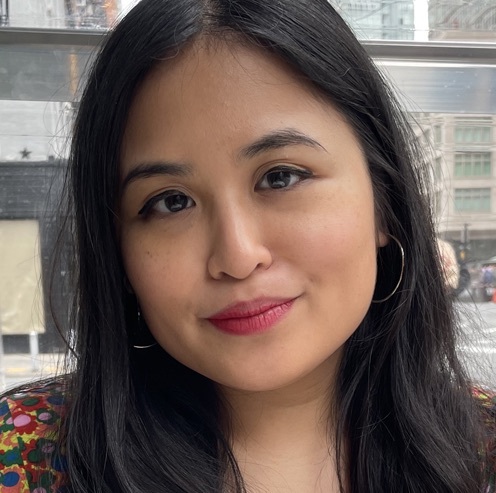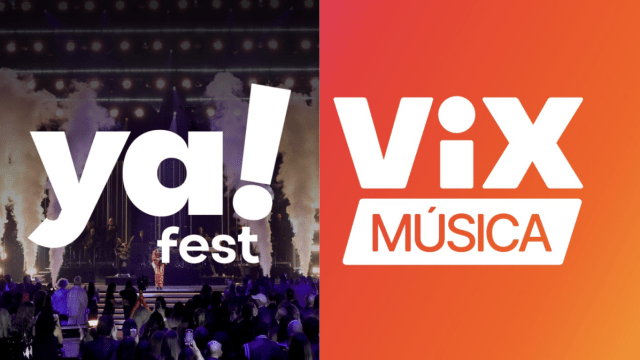We deliver! Get curated industry news straight to your inbox. Subscribe to Adweek newsletters.
ADWEEK’s upfront postmortem chats have included NBCUniversal, Fox, and Amazon, but now it’s TelevisaUnivision’s turn.
At TelevisaUnivision’s 2025 upfront event this week, guests at Hall des Lumières were treated to an opening performance by Prince Royce as well as an immersive presentation full of color, vibrancy, and energy to highlight Hispanic culture. Now, TelevisaUnivision’s president of U.S. advertising sales and marketing, Donna Speciale, is explaining how it all happened.
Speaking with ADWEEK, Speciale discussed the behind-the-scenes of the company’s event, the strategy behind TelevisaUnivision’s music initiatives, and what she’ll do differently next year.
ADWEEK: Congratulations on making it through upfront week. Looking back, what are you most proud of?
Speciale: The energy in the room was just electric. For us, what I’m most proud of is the story that we tell. We have a very unique story that’s different than most. We’ve always been rooted in culture and community, and we have a purpose. Our expertise in Hispanic is so deep, with 70 years of expertise, and we showed our investment. Our evolution is not stopping with all the announcements that we had—with our music strategy, with the microdramas, which I will tell you, clients are so excited about.
I’m getting so much great feedback about the microdramas and the extension of our music strategy because there’s no other media company that’s focusing on that the way we are.
This is the first time TelevisaUnivision hosted the upfront at Hall des Lumières. How was this new space compared to previous venues?
Our goal has always been to make it simple for everybody, but also to educate, so this space lent itself perfectly to really bring the vibrancy and have clients be immersed in the culture. You saw it around the walls. The projection that we were doing. When we had our sports up, you were immersed in the stadiums. You saw the immersions when we were talking about El Conquistador, and we immerse you into the Dominican Republic, into the forest, into the jungle.
The goal was to get our clients and our partners to be literally a field of vibrancy and the energy of the Hispanic culture. That’s what we try to do every time. I thought this space really brought it to life.
Prince Royce opened the show and is going to be one of the artists featured in some of the docuspecials on ViX Música. How important was it for you to highlight the music strategy to marketers?
It was really important because the strength of Latin music in the U.S. is undeniable. It’s now part of the ecosystem. We’ve always been focused on music, but it was a strategy of ours to take it to the next level. We are now—in my mind—the home of Latin music. We needed it to land across all of our platforms.
Having the launch of Vix Música rounded off our capabilities, not from it being on our linear platforms with Univision and UniMás, but now, it really being with ViX and bringing all the streaming to it, lends itself to the younger audience and having music now be the place to go on a new platform.
Reaching younger audiences was also such a central part of the presentation. Can you speak to how it was important to highlight that to marketers?
Rolling out new digital-first formats was definitely something we were focusing on, with what is happening with the young behaviors and the young audience with TikTok, and we are doing so well with the vertical content that we’re doing on ViX.
Between the momentum that we’re having with the vertical content on ViX and with the behavioral changes of young America, and young consumers being comfortable with vertical video and basically living and breathing mobile content, it just made sense for us.
And what can you share about the microdrama strategy?
This was the right time to launch the digital-first formats with microdramas. We wanted to focus on dramas because that’s where our expertise lies with telenovelas. Obviously, we needed to change our behavior a bit because telenovelas are much longer in length, and the storytelling is very different. Over the past few months, we’ve been doing a lot of testing, learning, and iterating with the production of the one-minute [videos] because you need to capture the audience in 5 to 10 seconds.
We’ve basically changed the brain in production of how we do it, and we’ve been doing that leading up into the launch in July. But we’re not going to stop there because we believe that vertical videos and the way people are consuming are important. Music is going to be now in vertical format—the micronovelas and microdramas, microseries, microdocuseries, microcomedies.
This is only the beginning. In 2026, there will be a lot more. We’re kicking off in 2025 just to work with it and test with clients. But 2026 is where you’ll see it get pushed out.
You obviously ended the presentation with a choir performance. Is there anything else you want marketers to take away from the presentation?
Knowing the importance of the Hispanic audience and knowing that the Hispanic audience is a business imperative and a huge growth opportunity. Ending with preaching to the choir, we’ve talked about it for the past four-plus years. I love the closing. I loved the signature preaching to the choir. I love the way it lent into the advertisers to lean in, understand it, and see that the revenue and the ROI that they have been seeing this whole time definitely leaned into the advertisers that have still been sitting on the sidelines.
You mentioned before that clients are excited about microdramas. Is there anything you’re allowed to share about early negotiations?
We’ve been talking to them about it over the past couple of months because we’ve been doing pre-upfront meetings and dinners, so we’ve been giving them a peek under the hood before the announcements just to understand it.
But a lot of our clients want to come in with us and try to figure out and learn what’s the best way to put the messaging within them, because they are one-minute, and we want to keep the experience true to its form. We are doing all the original production. We can create some of these microseries with some of their priorities and messaging of brands within the storyline to make it very authentic. But we could also start doing creations where they begin doing storytelling in one-minute episodic episodes as well, so it’s not just the microseries.
We still have some time before it really kicks off in July. But I would say Q4 is where we’ll see the clients lean in the most.
Will you be back next year in upfront week?
Of course, we’ll be back next year. It’s important for us to be on that stage. It’s important for us to keep beating the drum on the importance of Hispanic audiences. That is not going away. It’s actually an audience that’s growing year after year. We are now 20% of the population, but the next few years is going to be even more. We’re not going to stop. We’re not going to stop until we have every single advertiser that is advertising to an English language that is now going to be leaning into Hispanic as well. So until that happens, we will be back on stage and we will be delighting and surprising and entertaining clients just like we did this week.
Is there anything you would do differently for next year?
What I would do differently is I would get a bigger venue. We had to kind of shut it down, and I had to get a lot of my internal team out so I could get the clients in, so every client did get in. But I’m thrilled to see the demand. We’ve obviously been doing a really good job with the industry and the capacity to get it bigger because it’s showing demand and interest. In my mind, it’s proof that it’s working.










